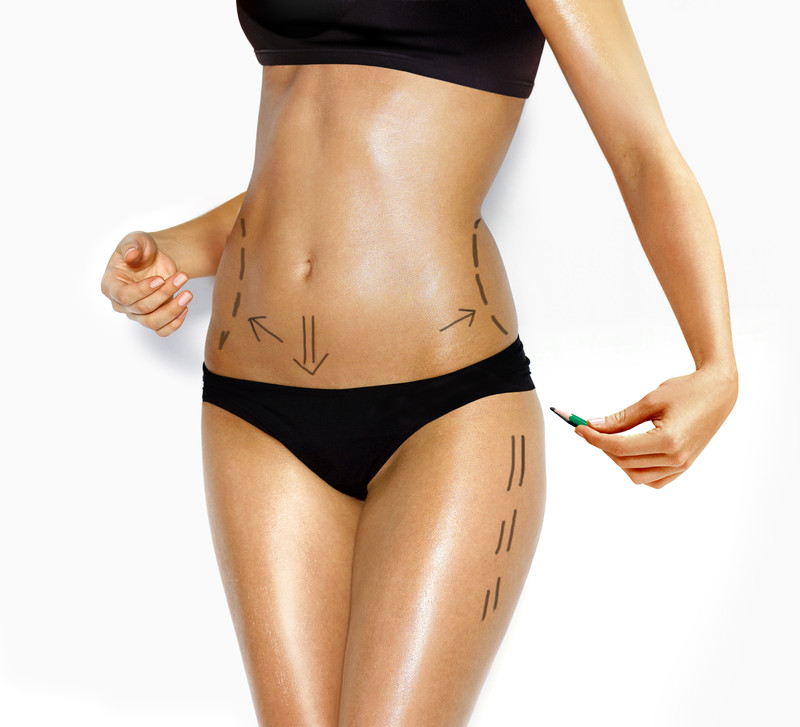Liposuction
LIPOSUCTION SURGERY
The number of fat cells in the adult human body is invariable. The number does not increase after puberty, but the existing fat cells’ volume does, which results in weight gain. Dietary habits and lifestyle are the most important factors in weight changes.
It is imperative to follow an appropriate diet, exercise and have a stable lifestyle to get rid of excess weight. However, stubborn weight accumulation may occur even in people meeting these conditions. It is caused by the fact that fat accumulation in these areas are genetically programmed. Some areas of the body such as the abdomen, inner and outer thighs and the knee are exercise-resistant fat accumulation zones. Excess fat deposition can be remedied to an extent with diet and exercise; more diet and exercise cause damage on the metabolism instead of slimming these areas. These stubborn fat accumulations that cannot be lost with diet and exercise make the body contour seem uneven. Liposuction consists in removing the fat from the body by extracting the accumulated fat with a special vacuum or injectors. It is not a weight loss surgery in any way, but a contour reshaping surgery. Liposuction will not only remove the enlarged fat tissue resistant to diet and exercise, but also reduce the number of fat cells. A lasting correction of body contour is possible only by reducing this number. In this operation, first a special fluid is injected into the area where stubborn fat is accumulated. Then a few incisions of a few millimeters are done near this area. Depending on the patient’s situation, metal tubes with 2 to 6 mm diameters called cannulas are inserted into the skin, they are attached to a suction device with clear tubes. The suction device is then activated and the cannulas are moved in adequate depth of fat accumulation areas for extraction. The suctioning process continues until the desired body shape and a smooth skin surface are reached. In recent years, ultrasound technology is used to disintegrate excess fat tissue; they are then removed by suction in a similar way.
When classic liposuction technique has first been used in the 1970s, it caused severe issues due to the cannula diameters being too large and cannulas too sharp. The operation caused the body to lose a significant amount of water and electrolytes. Some patients passed away following the operation. Today, these issues are outdated. Liposuction has an indispensable place in body contour reshaping as a result of techniques used during the past 10 years. It is a safe surgery as long as the aim is not weight loss but contour correction, performed on a carefully selected patient with a good technique in hospital environment and safety limits are respected. Today the safety limit is considered 2.5 to 4.5 liters in different sources, however some doctors may remove more. My suggestion to avoid possible risks is to remove any amount exceeding 3 liters during a second operation.
Theoretically, liposuction can be done on several areas of the body. But in practice, when performed on areas with a high volume of loose skin or stretch marks, it may cause the skin to loosen even more and sag. To avoid such disappointing results, discuss the efficiency of only liposuction and solutions to possible skin loosening with your doctor and follow their suggestions. An experienced plastic surgeon will sufficiently enlighten you in this subject.
It is possible to remove excess fat in several areas such as under the chin, side of the upper arm, breasts, abdomen, waist, thigh, inner knees and back of the leg with liposuction. In addition, it is used in other body contouring surgeries (abdominoplasty / tummy tuck, breast reduction, etc.) as a complementary procedure.
OPERATION
The surgery is performed in hospital environment in an Operating Room and under the supervision of an anesthesiologist. General anesthesia is most often used for larger areas, while local anesthesia combined with sedation (intravenous tranquilizer) is preferred for limited ones. In very limited, small areas, local anesthesia will be sufficient. The operation takes between 1 – 1.5 hours depending on the areas to be treated. The incisions of the cannulas will be closed with 1-2 sutures. At the end of the operation, an area-specific, special corset will be put on. Depending on the level of surgery, it is possible to leave the hospital the same day, or 24 hours later.
Post-operative period is generally comfortable. Pain is mild and can be treated with medication. The corset will be worn for 3 to 6 weeks. Violaceus color changes may occur in vacuumed areas. Swelling, tingling and burning sensation may occur, however they disappear within 3 weeks. The scars become barely noticeable within 2 to 6 months. Massaging the concerned areas with circular movements may be suggested in the weeks following removal of the corset. Although the results are visible after the operation, noticeable results will appear after the second month.
This is a cosmetic surgery and a plastic surgeon must be consulted. Due to high demand, surgeons from other specialties claim performing this operation. It will be beneficial to the patient to enquire about the surgeon’s specialty before the operation.

